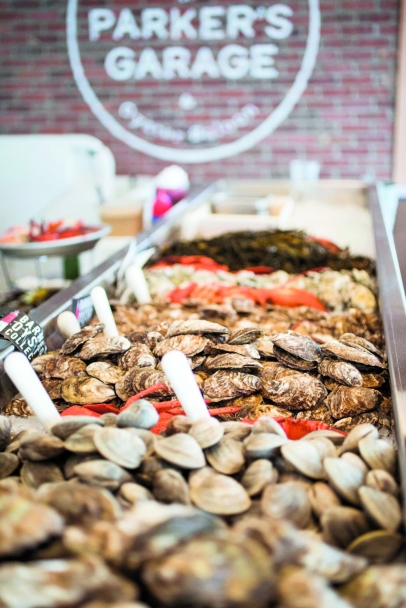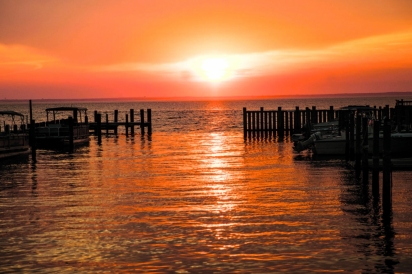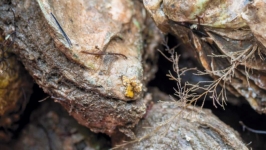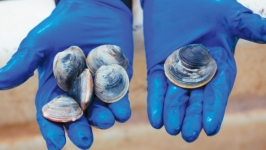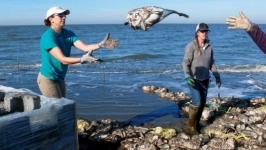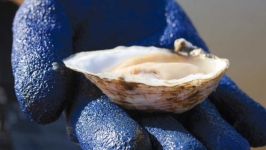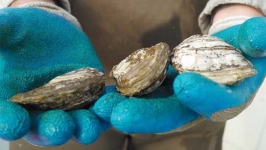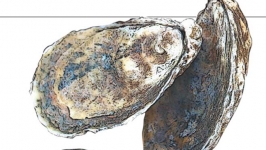HEALTHY BARNEGAT BAY, HEALTHY MARKET
Farmers’ alliance invigorates industry
When Scott Lennox of Forty North looks out over his newest farm location in the Barnegat Bay, he sees more than a place to grow oysters. He sees the potential to tell a story about the watershed. When you’re steeped in all things Jersey grown, it’s easy to forget that the state can get a bad rap. “Jersey oysters, really?” some say. To that, locals might reply: “It’s your loss.” Plenty of New Jersey restaurants are clamoring to sell them these days. But visionary farmers like Lennox and partner Matt Gregg are taking the high road, and tackling the issue head on.
“Anybody who has ventured beyond the industrial corridor of I-95 knows that there are some really beautiful areas in the state,” says Dr. David Bushek, director of the Rutgers Haskin Shellfish Research Laboratory. “That extends into the estuaries and the coastal waters of the Atlantic.”
Lennox agrees: “What’s cool about Barnegat Bay is that it’s not one tributary going into the bay.” Waters from the Manasquan River to West Creek feed a vibrant growing space where numerous oyster fl avors and shapes are made possible. That may surprise those who think it’s a creeping dead zone. In reality, it’s the opposite. Oyster farms, by regulation, can only exist in ship-shape waters. If it’s on your plate, that means it’s grown in a location deemed healthy. “As far as promoting this as a pristine place to grow oysters, it has all of the track record,” Lennox says. And the more growers who can get that word out, the better. “Those kinds of things help a lot, letting people know that there’s healthy shellfi sh in the state,” Bushek says, crediting Forty North as equally adept farmers and marketers.
With the creation of Barnegat Oyster Collective in 2016, they’re now taking that to the next level.
A Team Approach Solves Problems
Two words are familiar to anyone who has tried to start an oyster farm in recent years: red tape. To be fair, the state has worked hard to streamline, overhauling leasing in 2016. “We’ve created a series of very predictable and transparent guidelines,” says Russ Babb, director of the Bureau of Shellfisheries, a division of the state Department of Environmental Protection. “There are no curveballs. Everything is spelled out.” Moving forward, Babb envisions even clearer rules and a master, statewide aquaculture plan, something farmers will surely welcome.
In the meantime, growers are banding together to share knowledge and inspiration.
The Barnegat Oyster Collective creates a new center of gravity for those interested in rewriting the script regarding Jersey bivalves. Providing an alternative to wholesale distribution, the collective encompasses eight commercial harvesters in Barnegat Bay, handling everything from distribution forward. Growers get to do what they love best: cultivate specialty oysters and experiment with new techniques. Gregg, Lennox and their team handle the marketing and sales, which includes a whole lot of relationship building.
It’s working. Currently, Forty North’s Rose Cove and Sugar Shack oysters, along with Sloop Points and Swan Points from partner growers, are showing up on menus in Jersey and in establishments like The Olde Bar in Philadelphia and The Lobster Place in Manhattan.
“When Scott and I started to harvest oysters, we were tripping over ourselves,” Gregg says. “We spent way too much time learning the rules.” Through the collective, they aspire to help people through that process, while building a brand for the entire region.
The farmers also benefit from one another’s talents. “If you have a collective of people, you’re going to have someone who’s really good with boat engines,” Gregg says. “You’re going to have someone who knows a lot about the genetics of oysters. You’re going to have someone who likes to go to restaurants a lot, and knows which restaurants should have our oysters.”
The point is to sell more, sure. It’s also about showcasing Barnegat Bay’s beauty and protecting the watershed. “One of the purposes of the collective is to get people out there,” Lennox says. When their new Barnegat Light location is fully up and running, they intend for it to be “less like an independent farm, and more of a community farming area.” That means bringing together scientists, growers and eaters—and exploring ideas from aquatourism to a shellfish CSA.
There’s wisdom in the concept. It’s hard not to be inspired with the breeze blowing, young oysters growing and sunlight painting the water. Gregg and Lennox also stress the oyster’s positive effects. No nutrients are added to the bay. Oysters are self-sufficient purifiers that consume algae while drinking up to 50 gallons a day. When farmed oysters spawn, they also support natural recruitment outside of their cages or bags, which bolsters aquatic life up and down the food chain.
In a way, it makes eating oysters a form of environmental activism. “Every oyster that I sell is an incentive to reinvest, and to put another 10 oysters into the bay,” says Gregg. “A farmed oyster doesn’t know that it’s a farmed oyster, and an oyster farmer is inevitably going to contribute to recruitment, which in turn supports a lot of fish species.”
Forty North alone has between 3 million and 4 million oysters in its Rose Cove lease, located in the Tuckerton portion of the Barnegat Bay. The young fin fish and blue claw crabs in the neighborhood surely appreciate the company.
Restaurant Develops a Signature Oyster
The power of the idea can be seen in action at one of Long Beach Island’s newest restaurants, Parker’s Garage, which opened this May. The restaurant, a remix on the region’s maritime history, is decorated with vintage memorabilia, including a 1958 Chris- Craft boat. Boathouse bouillabaisse is on the menu. Nostalgia, however, isn’t the motivation.
Rather, Parker’s Garage is doing its part to reinvigorate the waterways. In partnership with Lennox and Gregg, the restaurant is developing its own oyster: Parker’s Pearls. It’s a signature variety of Crassostrea virginica, grown in Forty North’s floating cages in Rose Cove. A FLUPSY—or floating upweller system—at the restaurant’s dock lets juvenile oysters get a head start before they’re moved to the bay for grow-out. At market size, they return back to the dock, where a sorting facility offers live views of the harvest. “It’s giving us the opportunity to brand our own oyster and have a more direct relationship, tide to table,” says co-owner Eric Magaziner.
“It’s all about the health of the bay,” adds Melanie Magaziner, who co-owns the restaurant with husband Eric and two other couples, Bob and Ginna Nugent and William and Linda Burris. The ethos is something for which the group—which counts eateries Mud City Crab House and Ship Bottom Shellfish among its portfolio—is known.
The team also launched the region’s first shell-recycling program in April 2015, partnering with shellfish grower Dale Parsons Jr. and Stockton University Marine Field Station. The idea is for discards that would otherwise get trashed to be collected, cured and returned to the water—ideally with disease-resistant larvae in tow, if the funding pans out. The first batch of 1,000 bushels is expected to be added to the Stockton research reef this summer. The overarching program is also kicking into overdrive.
“The beauty of this whole project is that now we’re going to be full circle,” Melanie Magaziner says. “We’ll have the farm. We’ll have the sorting facility. Then they’ll go out to the restaurants and we’ll recycle the shells back to the bay. Oysters in particular: I don’t know if there’s anything else that could benefit the bay more at this moment.”
By building up the region’s reputation, Lennox and Gregg hope to cultivate a widening circle of stewards. “Let’s say you had one tenth of a percentage of the Barnegat Bay earmarked for oyster farming,” Gregg says. “If you place that strategically throughout the bay, you have eyes on the water. You have stewards for the environment whose livelihood depends on the cleanliness of that water. That’s good for our community, and that’s good for the environment.”
It’s also ample reason to cheer them on, one half-shell at a time.
Barnegat Oyster Collective
barnegatoyster.com
Parker’s Garage
116 Northwest Ave., Beach Haven
609.492.1066 parkersgaragelbi.com


